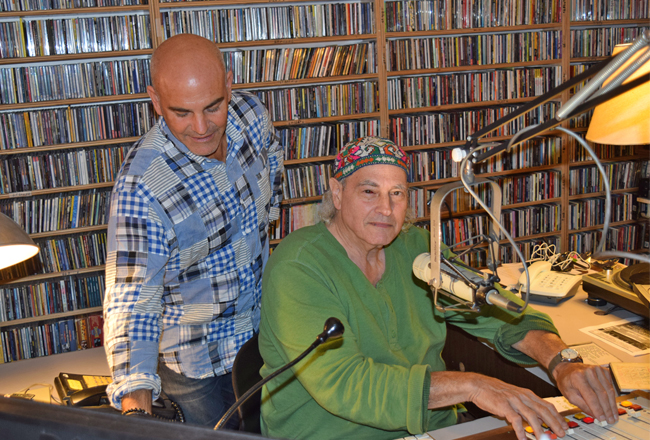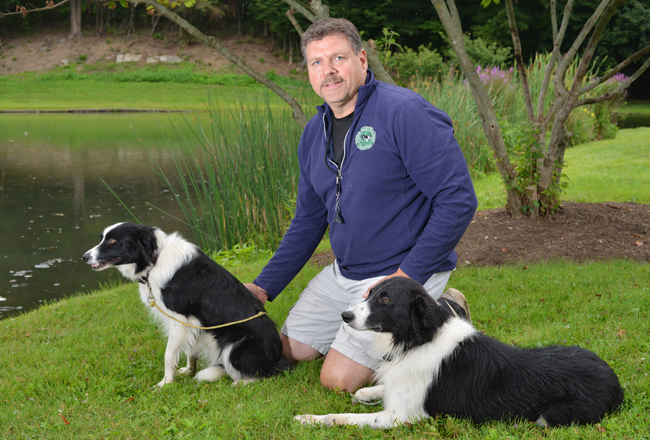
Upon entering the Bridgeport offices of WPKN-FM, it is difficult not to notice the walls ”” or the lack thereof. Throughout most of the offices, the space between the floor and ceiling consists of shelving packed with a jaw-dropping quantity of vinyl records and compact discs.
“We have 70,000 albums and 70,000 CDs,” said Steve di Costanzo, the station”™s general manager.
Even more remarkable than the quantity of recordings is the diversity of music played within these walls: from classic rock to vintage jazz and folk tunes, from a globe-spanning gamut of world music to the tight little sphere of Connecticut”™s indie music scene, and from landmark classical compositions to obscure selections in the realm of outsider music the selection is staggering. Then again, musical diversity is what drives many listeners to WPKN”™s 89.5 slot on the FM dial ”” including di Costanzo.
“I”™ve always been a huge fan of music,” he said. “I was captivated listening to WPKN ”” there was music from North Africa, the Middle East and India. I heard great psychedelic music, and blues and jazz.”
Also enjoying the wide spectrum of selections were the editors of Connecticut magazine, which named WPKN as the state”™s best radio station for music in its newly released “best of” rankings. “It was a complete surprise,” said di Costanzo. “There was no lobbying, no reader poll. I don”™t think we were ever awarded it before. For a humble community radio station competing against AAA-format commercial stations, it”™s really exciting for us to be selected.”
WPKN began in 1963 as the campus radio station of the University of Bridgeport; the call letters stand for Purple Knights Network, a tribute to the school”™s sports mascot. In 1989, when the university was undergoing fiscal difficulties, it spun off WPKN as an independent nonprofit. The station retained its studios on campus in the Cox Student Center for a $10- a-year lease.
“We are very good neighbors,” di Costanzo said, noting that many university students served internships at the station and have participated in special broadcasts.
Di Costanzo arrived at the station in 2011 at a changing point in his life. A New York-based trade publishing executive who owned Golf Range magazine, he was in search of a new opportunity after selling the publication and relocating to Connecticut. Answering the FM station”™s call for volunteers, di Costanzo arrived at its office thinking that he was going to be involved with a public radio station rather than a community station.
“I did not know that difference,” he said. “I am not from the radio background and I always assumed they were one and the same. When I first came in as a volunteer, I was saying ”˜Why don”™t we call ourselves a public radio station?”™”
The Federal Communications Commission defines community radio as a noncommercial endeavor that is wholly supported by listeners, focuses on community issues and is staffed with unpaid programmers. “I am the only one with a full-time salary,” said di Costanzo, who became WPKN general manager in 2012 after serving on the station”™s board of directors. “We have three independent contractors ”” a director of operations, an engineer and someone who handles underwriting ”” and 130 volunteers and 65 programmers in the age range of 18 to 82.”
Nearly all of WPKN”™s programs are original productions, although a couple of syndicated programs from the nonprofit Pacifica Foundation are incorporated into the mix. The station”™s oldest running show, “Antique Blues” with Bill and Joan Nolan, has been broadcast for more than four decades.
Di Costanzo noted that there is always a person manning the broadcast studio, regardless of the day or hour. “Except when a Nor”™easter closes the place down, there has always been continuous output of programming,” he said.
The station”™s revenue comes in about equal portions from on-air fundraising, grants from philanthropic groups and special events, including the annual Music Mash record sale and music documentary screenings at Bridgeport”™s Bijou Theatre.
“Our budget is $300,000, which is pretty lean,” di Costanzo said.
The station”™s on-air fundraising in the last year has focused on covering the cost of a new transmitter and its installation. “The original transmitter came from the Empire State Building ”” we got it used about 40 years ago,” di Costanzo said. “Our engineer said it has almost run out of steam ”” the tubes that it uses are almost impossible to source. So, we”™re replacing it ”” and it”™s about $50,000 to just buy a new one, and then there”™s the installation fee.” The station has raised $65,000 but is still short of its $75,000 goal to cover installation costs, he said.
With a 10,000-watt broadcast signal, “You can hear us in downtown Southampton and up and down the North Fork of Long Island, and in almost all of Fairfield, New Haven and Litchfield counties ”” a 1.5 million potential listenership,” said di Costanzo.
The station has also been streaming online since 2008 and its public affairs programming has been repackaged as podcasts for downloading. “We have about 550 of those and in the last year-and-a-half we had 25,000 downloads,” the station manager said.
Eager to grow his audience for listeners and potential donors, di Costanzo is looking to add more musical genres to station programming to fill current scheduling gaps. “We”™ve been trying to add a rockabilly and a gospel show,” he said. “We used to have a big bluegrass show, but the programmer recently went down to Washington.”
Expanding also its public affairs programming, “We have 25 shows that are specifically community shows, everything from organic farming and natural health and medicine to wellness, meditation,” said di Costanzo. We have an economic show. We just added an LGBTQ show ”” we are trying to reflect the needs of the community. We have a new show with BPT Generation Now, a grass-roots social group involved in the livability and political issues of Bridgeport.”
Community radio cannot have paid advertisements, although an underwriting program brings sponsorship support from local businesses to the station. Di Costanzo is also reaching out to local cultural organizations and nonprofits to create and air public service announcements highlighting their respective missions. “We”™re all in this together and if we can be relevant and in their world and vice versa, it is a win-win situation,” he said.






















What is the frequency??? Sounds great, where do I go to hear it?